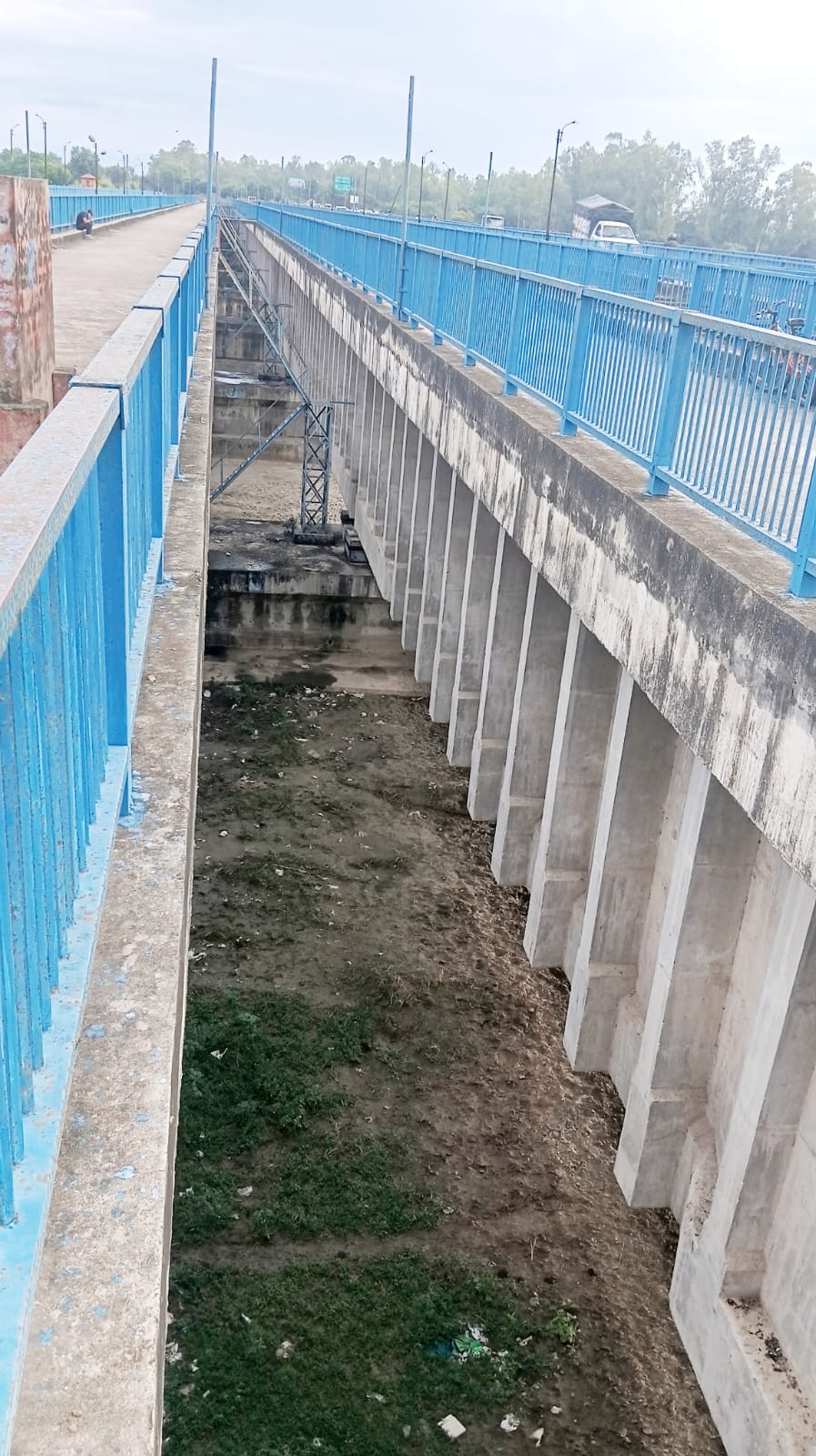By
Kaushal Kishore
Materials Engineer, Roorkee
The new Solani aqueduct on Ganges canal Roorkee was built with prestressed concrete which allows for longer spans and a simple more robust design compared to old bricks, lime- surkhi mortar masonry arches of the old aqueduct, in which 8.5 crores bricks were used, while iron railing used in the sides of two lanes were imported from England. This is interesting to note that materials bringing those days on ship from England to Indian ports take 6-10 weeks via the Suez canal or 3 to 6 months via the longer Cape of Good Hope. Calculate in it also time taken on road from Indian ports to Roorkee.
After retirement from University of now IIT Roorkee I joined M/S Roffe Construction Chemicals Pvt.Ltdd, Mumbai as it’s Chief Concrete Technologists afterwards I became it’s one of the Director.

AQUEDUCT picture taken on 7/10/2025
For the contractor of above aqueduct I designed M-40 grade of concrete with Roffe superpladticizer. Those interested may read my paper by visiting Google site and log in; Civil engineering portal The Ganges canal by Kaushal Kishore.
I had designed numerous concrete mix design almost all cements of India in this I find Utra Tech cement as one of best cement OPC and PPC both With Ultratech cement I had designed numerous concrete mixes from ordinary strength to M-80 grade concrete, self compacting concrete, shot crete concrete, fibre reinforced concrete, fly ash concrete and more There is life after retirement and after retirement I worked for 30 year’s which includes in free time working in home research and testing laboratory and numerous construction sites visits almost all India and outside India. At my age of 92 years I still work for 12 hours daily.
I had never worked for money. In spite of doing so gigantic work what to say about car I even do not have 2 wheeler not any of my house not a single inch of land in this world only pension from IIT Roorkee and few clothes

























Thanks for adding our softwares in your “Civil Engineering Softwares” section.
Hello everyone I have a doubt.We constructed a building 18×30=540 Sq.ft 18 ft is from north to south and 30 ft from east to west with ground floor and first floor.In the terrace we are constructing a head room in the south east(Agni moola) and thought placing the two syntax tank (500 liters each)on top of the head room.But the problem is some one told us the south east(Agni moola) can’t go higher than the south west(Kubera moola). So what we thought was just construct columns,beams and slab in the south west(Kubera moola) and place the two syntax tank on top of the slab.The slab dimension is 18×11’6″. In this 18 x 11’6″ area we have six columns.Two columns in the first and two in the middle and two in the last.But the problem now is only one column rod is extending up to the terrace.That column rod is middle one.The other five column rods were cutted for making parapet walls.So now the other columns rods is up to the first floor top slab and not up to the terrace. What can we do to construct the columns beams slab and place the two syntax tank on top?
Hello,
Is there any Water and Hydraulics engineer here?
What is concret PCI Grad or mark and how i can chanch one to other.
suppose In site work any column are not located in right possion and column are already full fill than what can i do fo this problem??????
Can I know approximate cost of Civil work for one acre of land in Karnataka
What is max limit of Fly Ash in Cement for blending as per Indian Standards?
Dear sir : req: sir both fine aggregate &course aggregate use as 150 microns will increase percentage 20-50.it would be strong for beams,road,bridges,building,it don’t effects cracks 5./.percentage will allow permitted sir thanking you sir
Can you please tell me what are the think to look for when making a RCC framework for roof casting…
Thanks for your useful information 🙂
sir , i am interested in doing things based on irrigation . can you suggest me some idea?
I want to study civil engineering from this site
I would just like to ask what does 1000/100 mean in “1000/100 PET Woven geotextile”? Thank you
Very nice education
I have 2 storied house at kolkata. The RCC roof slab of my ground floor is 4 inches. On 1st floor ,I want to construct a toilet inside a bedroom. The height of the toilet will be 6 feet. There are 4 walls of the toilet. 1 wall will be door. 2 walls are already constructed bedroom walls. Remaining 1 wall be constructed. If it is a 5 inch wall of 6 feet height, Can the ground floor roof slab of 4 inches withstand the weight of 5 inch wall of 1st floor?
i am student of civil engineering coming in final year , i have to work on research so could any one tell me good topic for research work ?
Nice website. Talks in good deal about civil engineering topics.
What is the development length and lap length of Rods in various diameter as per Indian standards
If I study B. Sc in Civil Engineering, then what/how is the prospect of being a researcher or teacher in recognized university. Please anyone answer me…
Hello sir, i am also a civil engineer and i am proud to be a civil engineer. Civil Engineers are the foundation of the nation without which nation cannot stand.